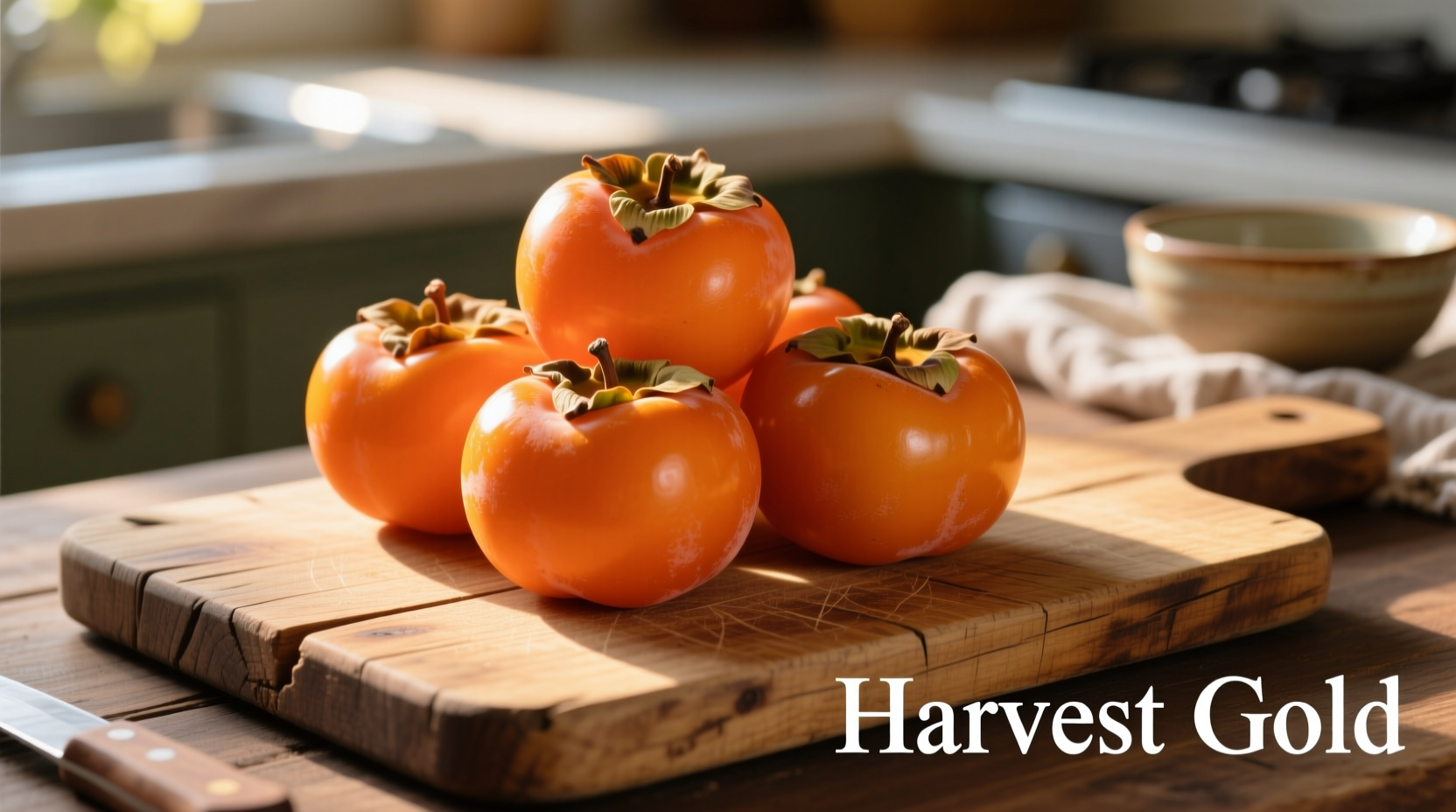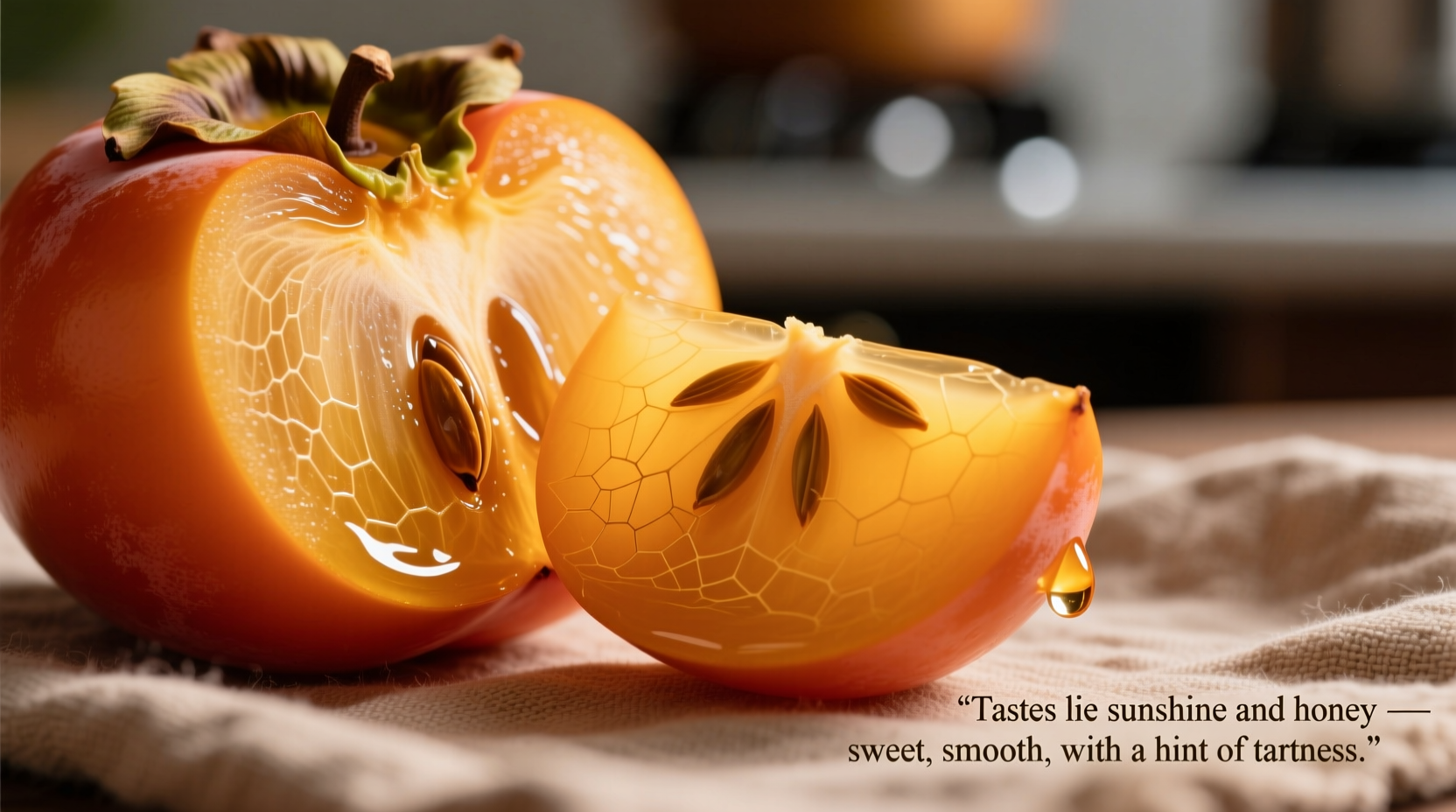Have you ever held a persimmon, wondering whether that vibrant orange fruit will delight or disappoint your palate? Understanding what does persimmon taste like is crucial because this unique fruit transforms dramatically from inedible to exquisite as it ripens. Let's explore exactly what to expect from this seasonal treasure and how to enjoy it at its flavorful best.
The Two Main Persimmon Varieties: Fuyu vs Hachiya
Before diving into flavor profiles, it's essential to recognize that persimmon taste varies significantly by variety. The two most common types found in markets create entirely different tasting experiences:
| Variety | Appearance | Ripeness Requirement | Taste Profile |
|---|---|---|---|
| Fuyu | Short, squat, tomato-shaped | Firm (can eat crisp) | Mildly sweet, honeyed apricot with subtle pear notes |
| Hachiya | Elongated, acorn-shaped | Very soft (jelly-like) | Intensely sweet, complex blend of dates, mango, and citrus |
This critical distinction explains why some people love persimmons while others avoid them—the what does a persimmon taste like experience depends entirely on choosing the right variety at proper ripeness.

The Ripeness Transformation: From Mouth-Puckering to Magnificent
The most dramatic factor affecting what persimmons taste like is ripeness. This transformation represents one of nature's most remarkable flavor journeys:
- Unripe stage: Contains high levels of soluble tannins that create an intensely astringent, drying sensation throughout your mouth—similar to biting into an unripe banana but significantly more pronounced
- Transition phase: As persimmons ripen, tannins polymerize and become insoluble, gradually reducing astringency while sweetness increases
- Perfect ripeness: For Hachiya varieties, the fruit becomes completely jelly-like with a custard-like texture and complex sweet flavor; Fuyu varieties remain firm but develop full sweetness
According to research from the University of California's Agriculture and Natural Resources department, the tannin content in unripe Hachiya persimmons can reach 1.5-2.0%—enough to cause significant astringency—while dropping to negligible levels when fully ripe (UC ANR, 2023).
Flavor Profile Breakdown: What to Expect When Perfectly Ripe
When properly ripe, persimmons deliver a distinctive flavor experience that's difficult to compare directly to other fruits. Here's what you'll taste:
Primary Flavor Notes
- Honey-like sweetness (more pronounced in Hachiya)
- Apricot and peach undertones with tropical hints
- Subtle citrus brightness, particularly in early season fruit
- Cinnamon or baking spice notes in some varieties
Texture Considerations
- Fuyu: Crisp like an apple when firm, becoming tender-crisp when fully colored
- Hachiya: Completely soft, jelly-like texture when ripe—scoop with a spoon
Professional chefs at the Culinary Institute of America note that perfectly ripe persimmons contain natural pectin that creates a luxurious mouthfeel, making them ideal for both fresh consumption and cooking applications where texture matters (CIA, 2022).
How to Select and Enjoy Persimmons for Optimal Flavor
Understanding what does persimmon taste like is only half the battle—you need to know how to select and prepare them properly:
Selection Guide
- Fuyu: Choose firm fruits with deep orange color and intact green calyx
- Hachiya: Select fruits that feel slightly soft but not mushy; avoid any with dark spots
Ripening Techniques
- Place unripe Hachiya persimmons in a paper bag with an apple or banana to accelerate ripening through ethylene gas exposure
- Check daily—Hachiya typically ripens in 3-5 days at room temperature
- Fuyu can be eaten firm or allowed to soften slightly for sweeter flavor
Best Ways to Enjoy
- Fresh: Slice Fuyu like an apple (skin on); scoop Hachiya like pudding
- Culinary uses: Add to salads, bake into breads, or puree for sauces
- Pairings: Complements citrus, ginger, vanilla, and mild cheeses
Americans' perception of persimmon flavor has evolved significantly over the past decade. According to USDA consumption data, persimmon sales have increased by 38% since 2018 as consumers learn proper ripening techniques and discover the fruit's true flavor potential (USDA ERS, 2023).
Common Misconceptions About Persimmon Flavor
Many people develop negative impressions of persimmons due to common misunderstandings:
- Misconception: All persimmons taste the same
Reality: Fuyu and Hachiya offer completely different taste experiences - Misconception: Persimmons are always astringent
Reality: Only unripe Hachiya varieties cause this reaction; Fuyu can be eaten firm - Misconception: The skin is always bitter
Reality: Skin is completely edible and flavorful when fruit is properly ripe
Understanding these distinctions transforms the what does persimmon taste like question from potential disappointment to delightful discovery.











 浙公网安备
33010002000092号
浙公网安备
33010002000092号 浙B2-20120091-4
浙B2-20120091-4